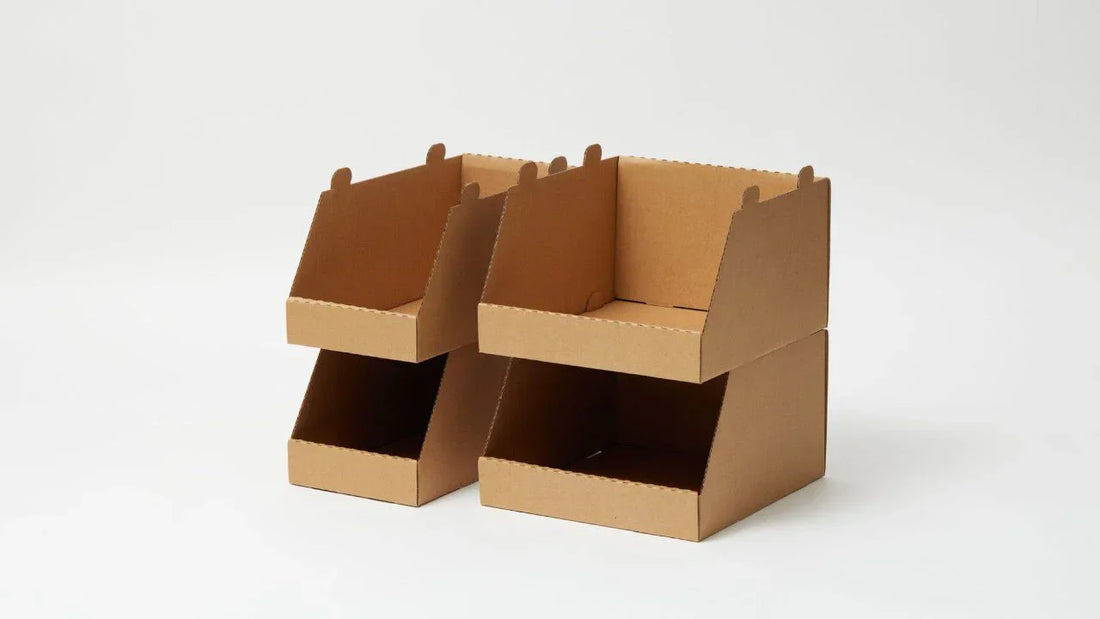Stackable packaging, especially stackable food packaging, is designed to be stably stacked to maximize space efficiency during storage and transport. This innovative packaging solution plays a crucial role in the food service, delivery, and eco-friendly logistics sectors by optimizing space, reducing damage, and enhancing convenience. Whether for takeout meals, food distribution, or storage, stackable packaging ensures that containers fit securely atop one another, making handling and transport more efficient and sustainable.
Fundamentals vs Design Principles
What is Stackable Food Packaging?
Stackable food packaging refers to containers specifically engineered to be stacked securely without slipping or collapsing. This packaging is essential in food distribution, takeout, and storage, allowing multiple units to be transported or stored in a compact and organized manner. Key design traits include a uniform base, lids that fit snugly onto the base, and anti-slip textures to prevent shifting during stacking.

Design Techniques: Interlocking & Non-Slip Features
Effective stackable packaging incorporates interlocking ridges, nestable structures, and friction-fit lids to enhance stability. These features prevent containers from sliding off each other during transport, which is critical for food delivery logistics and restaurant packaging where safety and efficiency are paramount. The interlocking design ensures that stacked containers remain stable, reducing the risk of spills or damage.
Stackable vs Non-Stackable Packaging
Compared to non-stackable packaging, stackable designs improve performance by enabling higher stacking heights and better space utilization. They reduce the risk of product damage during transit and storage, leading to cost savings and less food waste. Non-stackable packaging often results in inefficient use of space and increased risk of shifting or collapsing stacks.
Technical vs Structural Design
Load-Bearing Capacity vs Stack Height Limits
Stackable packaging must support significant vertical pressure, with typical stacking height limits around 120–150 cm during transport. The containers are designed to bear the load without deforming, maintaining structural integrity for both cold-chain and hot food applications.
Interlocking Design vs Column Stacking
Well-engineered stackable packaging uses interlocking features to prevent shifting during transit. Column stacking, where containers align vertically, offers maximum stability, while interlaced stacking can provide additional support depending on the packaging design.
Nestable vs Stackable vs Modular Designs
Nestable packaging fits inside one another to save space when empty, while stackable packaging is designed to be stable when full and stacked. Modular designs combine both features to optimize space usage, storage compatibility, and cleaning cycles, offering flexible solutions for various logistics needs.
Materials vs Durability
Best Materials for Stackable Packaging
Materials like high-density polyethylene (HDPE), polypropylene (PP), kraft board, and reinforced cardboard are commonly used for their strength and durability. Thermoform plastics and molded pulp are popular choices, balancing protection with sustainability.
Food-Safe vs Durable Stackable Food Packaging
Stackable food containers must be BPA-free, food-contact safe, and resistant to heat and moisture. Many are microwaveable and freezer-compatible, catering to diverse food service needs.

Eco-Friendly vs Recyclable Packaging
Sustainability is a growing priority, with compostable containers, mono-material designs, and easy-to-disassemble packaging gaining traction. Compliance with regulations, such as those in Canada, ensures recyclability and reduces environmental impact.
Logistics vs Storage Optimization
Stackable Packaging for Transport Efficiency
Stackable packaging maximizes cubic capacity in trucks, shipping containers, and delivery vehicles, minimizing packaging waste and reducing shipping damage. This efficiency translates into cost savings and lower carbon footprints.
Warehouse vs Storage Advantages
In warehouses, stackable packaging enables better vertical utilization, faster loading and unloading, safer stacking, and improved traceability. These benefits streamline operations and enhance inventory management.

Pallet vs Container Loading Optimization
Optimized pallet patterns, anti-slip sheets, and overhang prevention techniques further improve stacking safety and efficiency. Software-assisted stack planning is increasingly used to maximize space and protect goods during transit.
Stackable packaging represents a crucial advancement in food packaging technology, combining smart design, durable materials, and sustainability to meet the demands of modern food service and logistics industries. By improving space utilization, protecting food products, and supporting eco-friendly practices, stackable packaging is an indispensable tool for efficient and responsible food distribution.
Retail vs Consumer Applications
Stackable Packaging for Retail Displays
Stackable packaging helps maintain neat product alignment on shelves, maximizing shelf space and enhancing visual appeal. Transparent and branded packaging designs increase product visibility and attract consumer attention, boosting sales potential.
Stackable Food Packaging for Takeout vs Delivery
These containers are engineered to withstand the pressures of stacking during delivery without leakage or damage. They improve efficiency in preparing and transporting multiple meal kits, ensuring food quality and customer satisfaction.
Cosmetics vs E-Commerce Use Cases
Stackable jars and mailer boxes offer branding opportunities while providing convenience in storage and shipping. Their stable stacking reduces damage during transit and optimizes packaging for e-commerce logistics.
Sustainability vs Reusability
Reusable Stackable Packaging
Reusable stackable packaging systems reduce costs through returnable cycles and significantly lower carbon footprints. They are ideal for closed-loop delivery chains, promoting sustainability in supply chains.
Recyclable vs Circular Design
Designs featuring easily separable components and mono-material construction facilitate recycling and support circular economy principles. These strategies help reduce the overall life cycle impact of packaging.
Zero Waste vs Sustainable Packaging Strategies
Innovations such as lightweighting, modular reuse, and refillable packaging systems contribute to zero waste goals. These approaches minimize material use and encourage sustainable consumer behaviors.
Conclusion
Stackable food packaging is revolutionizing food logistics by enhancing space efficiency, protecting products, and supporting sustainability initiatives. For businesses seeking custom, eco-friendly stackable packaging solutions, kimecopak.ca offers expert design consultation and bulk order services. Contact us today to optimize your packaging for the future.




